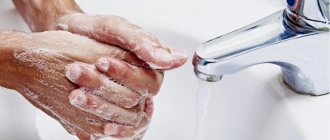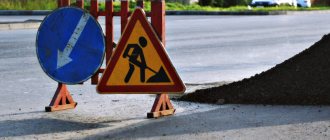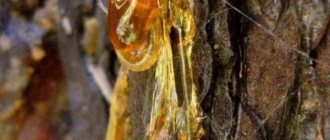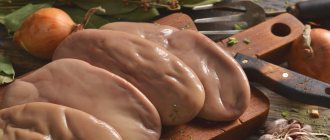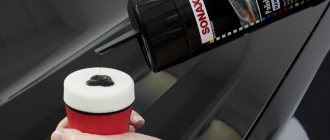To clean your car from tar or tree buds, use hand sanitizer.
Together with unscrupulous or incompetent auto mechanics, fines from traffic police cameras and various vehicle malfunctions, buds falling from trees and adhering resin are just as unpleasant and the worst nightmares for any car enthusiast. The fact is that adhering resin and tree buds getting on the car seriously damage the paintwork of the car body. Due to the specific chemical composition of tree resin or buds, it will be very, very difficult to wash them off the car body using traditional methods. Many car owners resort to various chemical compounds (products) sold in car dealerships, spending a lot of money on them. Some car owners go straight to the car wash, hoping there to clean their car of tar and bud stains that have formed. But don’t rush to get to the car wash, friends, there is a simpler and quicker easy way to easily remove resin from the body of your car. And what is interesting here and most importantly, this method is the cheapest, simplest and most reliable, it carries less risk of damaging the factory paint of the car body.
See also: Ten myths about car washing and car washing
For our part, we have nothing against various special chemical detergents. But not all products on the market can cope with formed and difficult to remove stains on a car. On the contrary, some products can damage your car while cleaning it from stains.
So friends, take your time and be careful when choosing products for cleaning your car from tar or other very sticky contaminants.
But for our part, we think why waste your precious time studying a large and even huge amount of chemistry (chemicals) for cleaning a car..(?) After all, in any chain grocery supermarket (usually at the checkout) or in any pharmacy you can freely purchase hand sanitizer, which is used daily by millions of citizens around the world. Using this hand sanitizer, you can easily clean your car from adhering resin and stains caused by tree buds (especially spruce and poplar buds) without resorting to other more costly and time-consuming methods.
Firstly, if you notice that the body of your car is covered in sticky resin stains, then please do not try to clean it (the body) with a damp cloth, this will not help remove the sticky substance. In any case, you need something more powerful and reliable to remove tar from your car.
Here's what you first need to do to quickly and easily remove resin, tree buds or other sticky substances that have gotten on the body from your car's paintwork.
It is necessary to prepare a hand sanitizer (preferably not a cheap one and from a well-known brand) to remove tar or other adhering substances.
How to remove poplar resin, traces of linden and pine from a car body with your own hands
Getting rid of Velcro means making sure that not even a speck remains from the contact of a tree bud with the paintwork. As already noted, the fourth day is the deadline when the body surface can still be saved without the use of polishing. Later, chemistry is no longer able to remove the famous yellowness that remains after removing the resin.
The proposed method is relevant precisely from the moment the poplar, pine or linden tree gets in contact with Velcro until the end of the fourth day:
- Remove buds from the body surface. This must be done so that the resin does not leak out of them. Use the following method: dampen a cloth in warm water, wring it out as much as possible and brush the tree flowering products to the side. Dry rags are not suitable for these purposes - they do not allow brushing. You should not remove it with your hands or a brush - the Velcro will open at the slightest hard touch.
- Wash the outside of the car. Contactless washing is preferred because it leaves fewer scratches.
- Wipe the body dry. There is no need to worry about defective areas - ingrained resin cannot be smeared with a rag.
- Remove tar stains. Soak a piece of cotton wool or a cotton pad in alcohol/acid and, without applying much effort, wipe off the resin. In most cases, the Velcro mark needs to be soaked: place a swab soaked in chemicals on the contaminated area and leave for 10-15 minutes. After soaking, the stain is removed with a slight movement of the hand.
- Final cleaning of the treated area. Produced using special auto chemicals to remove resin. Usually this is any can with the Bug & Tar Remover attachment. The operation is not always necessary; it is done at will.
Dry the smeared stain with a paper towel or large napkin
Once you apply hand sanitizer to a tar stain or tree bud stain, the stain (tar stain or tree bud stain) will begin to fade or come away directly from the body. Your task, friends, is to dry the treated surface with a paper towel or a paper napkin.
Please note that the stain may not completely disappear and some small resin residues may still remain on the car body.
Removal using home remedies
You can quickly remove fresh stains with inexpensive and easily available home remedies.
An American aerosol preparation, the main component of which is white spirit solvent (its share in the composition is 50%). This is why it is suitable for removing tar and bitumen. WD-40 effectively removes mostly fresh stains. It is unlikely to wash away dried and stubborn ones; in this case, you need to use stronger products.
WD should be sprayed directly onto the contaminated area. After 15 minutes, any remaining dirt must be removed with a damp cloth.
The product is flammable and has a negative effect on the skin, so safety precautions must be observed when using it. WD-40 is popular among motorists because of its affordable price, and you can buy it at any auto store.
White Spirit
This is a light solvent that does a good job of cleaning car paintwork from wood resins and bitumen. It copes even with dried stains, is highly effective, and is inexpensive.
White spirit can be applied using a car sponge. Exposure time 5 minutes. Then you need to carefully wipe the surface to be treated so as not to damage the paintwork of the machine. It is advisable to work with it wearing gloves.
Turpentine
Turpentine is an oily liquid with a characteristic odor. Works well on fresh stains of tar and bitumen. Apply with a cotton pad. Exposure time is about 3 minutes. Turpentine is toxic, so you need to work with it outdoors. In case of contact with hand skin, wash thoroughly with soap and water.
Alcohol
You can remove bitumen or tar from your car using alcohol. To do this, you need to soak a cotton pad or rag with it and apply it to the stain for 2 minutes. Then wipe the surface with a clean soft cloth. Alcohol is suitable when there are no special products at hand, and the contamination is fresh and insignificant.
Laundry soap
It contains fatty acids and alkali. This is an absolutely safe product that can also be used to clean dirt from your car. Laundry soap will not cope with stubborn, old stains; in this case, stronger substances must be used.
Margarine
Fresh bitumen stains can be easily removed with regular margarine. It is recommended to apply it to a warm surface to be treated. When heated, margarine melts and penetrates into the dirt. Then use a soft cloth to remove any remaining product and softened resin and bitumen.
How can you wash linden, poplar and pine from the surface of your car at home?
There are many examples of the use of household or pharmacy chemicals. Why is this direction attracting more and more car owners? The fact is that the properties of some drugs are not inferior to analogues from thematic auto chemical products, and their price is several times less. To be fair, we can give an example from a related area: how to polish plastic headlights yourself by hand - with toothpaste for several tens of rubles or a polishing kit for several thousand rubles?
So, you can wipe off poplar resin without a trace, traces from linden or glue from pine onto fresh:
- Ammonia (a solution of ammonia in water).
- Alcohol solution of boric acid (3%).
- Blue clay.
Coming closer to the technology of using this chemistry, the following point arouses interest: are they able to wash off the resin without harming the paintwork. Will this treatment leave various scratches and dull abrasions on the surface of the body?
Clay or medicines
When comparing contenders based on the level of damage caused to paint, clay is a clear outsider. It removes Velcro due to friction. When using alcohol and acid, there is practically no trace of it (it takes a little effort to wipe the stain, and the main mechanism for removing the tar residue is to dissolve it within 10-20 minutes).
Blue clay is often associated with a hologram effect. They say that if you rub in a circular motion, the treated surface will be noticeably different from the untreated one. In theory, it is necessary to scrape off poplar glue and resin residues from other trees only with translational longitudinal movements, without strong pressure, after first moistening the defective area with a soap solution.
Ammonia and boric acid do not spoil paintwork at all. Negative reviews about them are associated with ignorance of the technology, how to remove poplar buds or Velcro from linden or pine from the surface of a car with your own hands. There is only one remark about the drugs - they act slowly.
What about petroleum based solvents?
Products of petroleum origin and tree resin are reluctant to be washed off. We are talking about such varieties as:
Universal white spirit will only save you from minor contamination. If they can still remove a fresh tarry trace, then even a two-day-old trace of a solvent-like liquid cannot be removed. WD-40, gasoline, kerosene and carburetor cleaner do a better job than white spirit, but they are far from being as effective as medications.
Other means
The global automotive and household goods industry does not stand still. For example, wet wipes with alcohol appeared relatively recently. In the fight against fresh marks, they have proven themselves to be a good remedy. You just need to brush off the buds so that they don’t open. How to do this is one of the topics of further discussion.
Automotive stores also have interesting, modern items for removing stubborn stains. For example, a towel or anti-scrub mitten. The rubberized product copes well with tar stains, but again cleans due to friction. Therefore, the issue with mechanical polishing is not closed.
For your information. It is useless to use vodka instead of alcohol - it does not dissolve tar stains.


